Top 10 Supercars: 1990-1999
In this blog we discuss our top 10 the best supercars from the 1990s, an era full of exotic automobiles. Some of the defining features of the 1990s supercar era includes the amazing McLaren F1. What is your favourite car from the 90s?
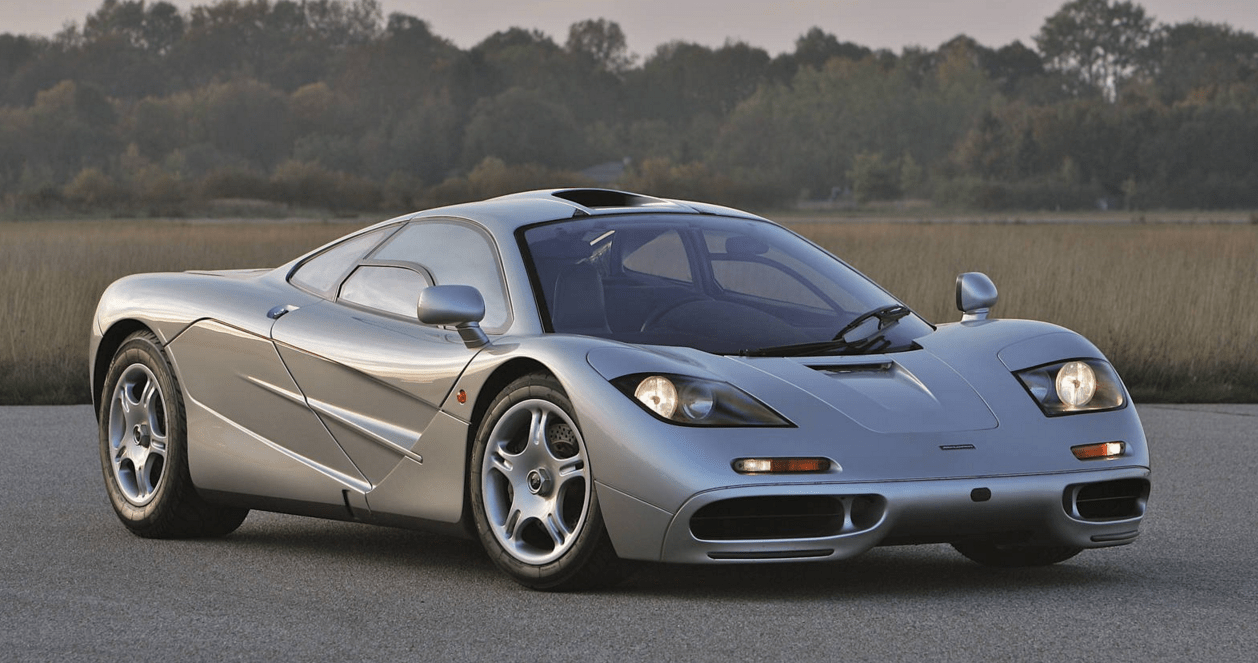 Gordon Murray’s automobile was the fastest production car ever made for a long time. It’s got an incredible top speed of 240 mph, which even puts our modern supercars to shame. Ergonomic features like the driver-centered, three-seat cockpit have rarely been seen since.
The technical challenge of getting a road car to such incredible speeds was one unlike any other manufacturer had undertaken. McLaren eventually settled on a 6.1-litre BMW V12. This was mounted in the middle of the car, and put 618bhp through the rear wheels.
The F1 was also the first production car to use a carbon fibre monocoque chassis, and gold famously lined the engine bay to aid with heat dispersal. This effort paid off, granting the F1 a staggering 0-60 time of 3.2 seconds and that all-important 240 mph top speed.
Gordon Murray’s automobile was the fastest production car ever made for a long time. It’s got an incredible top speed of 240 mph, which even puts our modern supercars to shame. Ergonomic features like the driver-centered, three-seat cockpit have rarely been seen since.
The technical challenge of getting a road car to such incredible speeds was one unlike any other manufacturer had undertaken. McLaren eventually settled on a 6.1-litre BMW V12. This was mounted in the middle of the car, and put 618bhp through the rear wheels.
The F1 was also the first production car to use a carbon fibre monocoque chassis, and gold famously lined the engine bay to aid with heat dispersal. This effort paid off, granting the F1 a staggering 0-60 time of 3.2 seconds and that all-important 240 mph top speed.
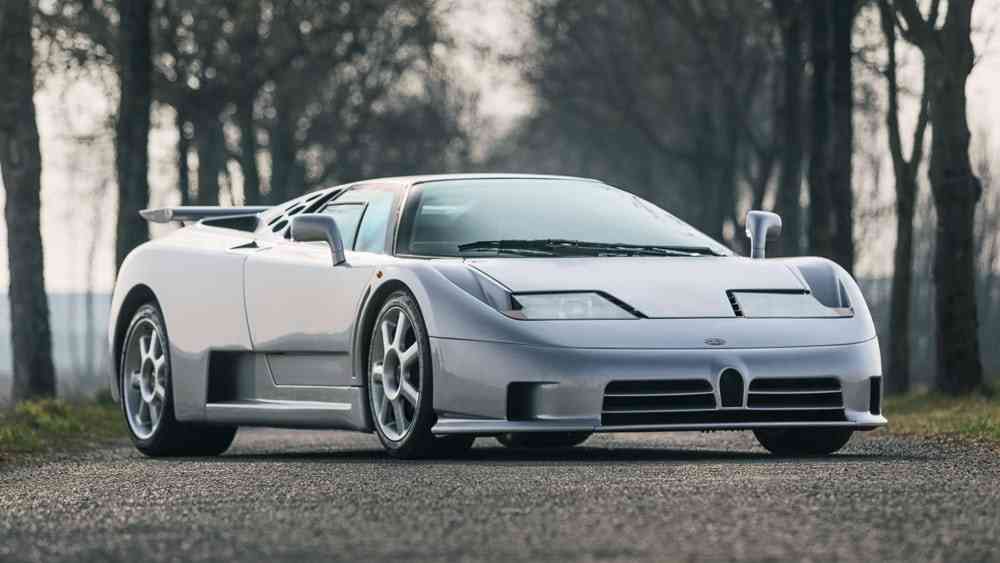 Initially revealed on the company’s founder, Ettore Bugatti’s 110th birthday in 1991, the EB110 came to be the last Italian-produced Bugatti before VAG took over.
These days the Bugatti name stands purely for all-out speed and refinement, and though the EB110 was never a record breaker at the top end of the speed stakes, topping out at 216mph, it was capable of reaching 62mph in just 3.2 seconds in 1992 Supersport trim – one of the fastest cars of its era over that dash.
That rapid acceleration was mostly thanks to the Bugatti’s 3.5-litre, quad-turbo V12, which transferred 604bhp to the road through all four wheels.
Initially revealed on the company’s founder, Ettore Bugatti’s 110th birthday in 1991, the EB110 came to be the last Italian-produced Bugatti before VAG took over.
These days the Bugatti name stands purely for all-out speed and refinement, and though the EB110 was never a record breaker at the top end of the speed stakes, topping out at 216mph, it was capable of reaching 62mph in just 3.2 seconds in 1992 Supersport trim – one of the fastest cars of its era over that dash.
That rapid acceleration was mostly thanks to the Bugatti’s 3.5-litre, quad-turbo V12, which transferred 604bhp to the road through all four wheels.
Jaguar XJ220
Jaguar’s first production supercar, the XJ220 was a bold step it held top speed record till McLaren F1 came along.
The XJ220 started life as a mid-engine, four-wheel-drive concept car developed by Jaguar employees in their spare time. That initial concept was planned around a V12 powerplant. By the time the first customer cars were delivered in 1992, a twin-turbo 3.5-litre V6 sat mid ship, delivering 542bhp.
With a top speed of 212mph, the XJ220 was the fastest production car from its launch through to 1993, when it was topped by another British-built speed machine. This peaked initial interest in the car, but between the 1990s financial recession and the car’s retail price of £470,000, few took up the offer of ownership and only 281 cars were produced throughout its run. It was handy on the track too; it went straight to the top of the Nurburgring time sheets in 1991, recording a lap of 7:46:36; Hardly surprising, considering it was built with help from Tom Walkinshaw racing.
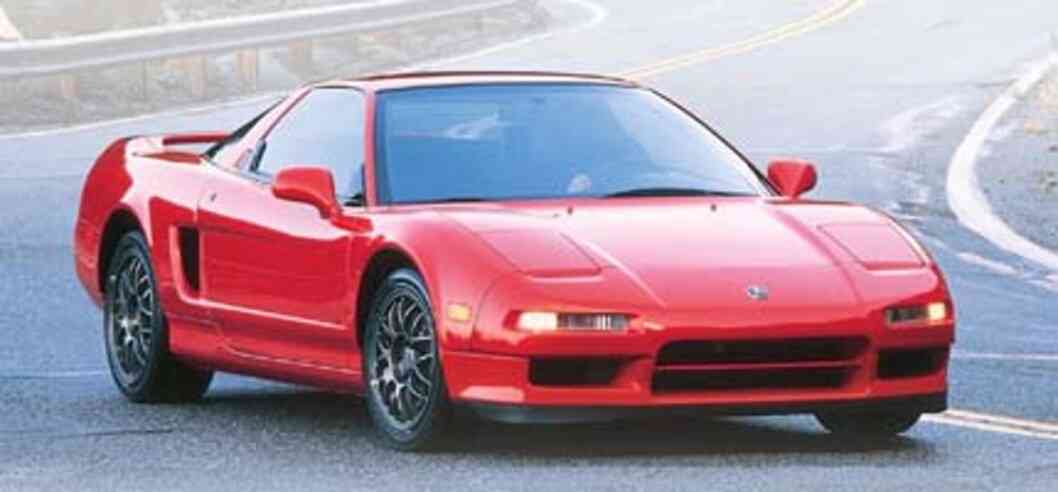 The launch of a supercar that caused a shock across the whole automotive scene came in 1991. With the NSX project, Honda set out to build a true supercar that had none of the ergonomic issues or reliability problems that plagued automobiles at the time.
Sold under the Acura brand in the States, and the Honda brand across the rest of the world, the NSX featured a 3.0-litre V6 with Honda’s trademark VTEC technology supplying the power, mounted mid-ship with extra consideration to the positioning of the seats and fuel tank for optimal weight distribution.
The launch of a supercar that caused a shock across the whole automotive scene came in 1991. With the NSX project, Honda set out to build a true supercar that had none of the ergonomic issues or reliability problems that plagued automobiles at the time.
Sold under the Acura brand in the States, and the Honda brand across the rest of the world, the NSX featured a 3.0-litre V6 with Honda’s trademark VTEC technology supplying the power, mounted mid-ship with extra consideration to the positioning of the seats and fuel tank for optimal weight distribution.
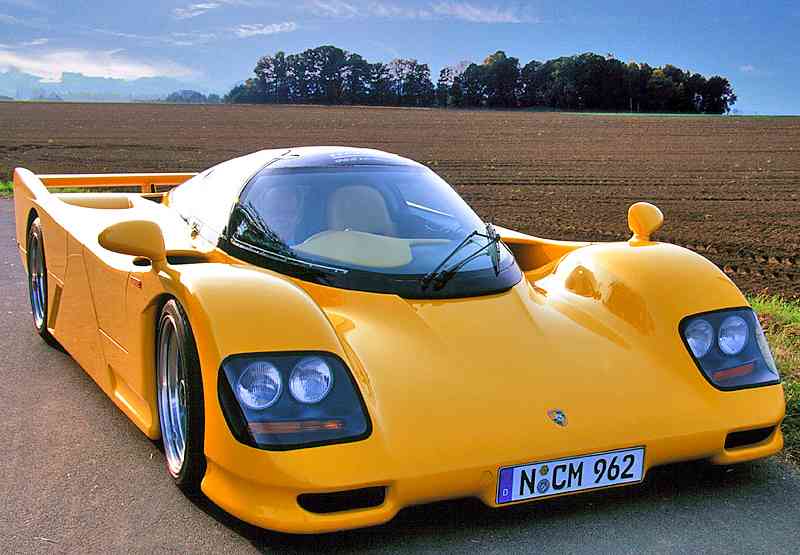 As a result of some creative rulebook interpretation the Dauer 962 won the Le Mans race in 1994. From 1983 forward, the Porsche 956 and its 962 IMSA spec version dominated for a decade. Porsche manufactured nearly 150 956/962s and sold many of the cars to private teams. Dauer took a handful of these Porsche 962s and modified them for street use. It is one of the most extraordinary cars to be sold for the streets, but that’s what allowed Porsche to enter the 962 in the GT category at Le Mans in 1994.
Of the companies that have produced a 962 road car, the most successful has been Dauer. After displaying their first 962 at the 1993 Frankfurt Show, Dauer partnered with Porsche to manufacture a contender for the 1994 24 Hours of LeMans. At the 24 hour race, Dauer showed up with both a road version and race version of the Porsches 962, a design which had already won Le Mans six times. After winning the race, the FIA declared it would be creating rules to make sure the 962 wouldn’t be back in 1995. However, with a Le Mans win under their belt, and with support from Porsche, Dauer continued to build their road-going 962.
As a result of some creative rulebook interpretation the Dauer 962 won the Le Mans race in 1994. From 1983 forward, the Porsche 956 and its 962 IMSA spec version dominated for a decade. Porsche manufactured nearly 150 956/962s and sold many of the cars to private teams. Dauer took a handful of these Porsche 962s and modified them for street use. It is one of the most extraordinary cars to be sold for the streets, but that’s what allowed Porsche to enter the 962 in the GT category at Le Mans in 1994.
Of the companies that have produced a 962 road car, the most successful has been Dauer. After displaying their first 962 at the 1993 Frankfurt Show, Dauer partnered with Porsche to manufacture a contender for the 1994 24 Hours of LeMans. At the 24 hour race, Dauer showed up with both a road version and race version of the Porsches 962, a design which had already won Le Mans six times. After winning the race, the FIA declared it would be creating rules to make sure the 962 wouldn’t be back in 1995. However, with a Le Mans win under their belt, and with support from Porsche, Dauer continued to build their road-going 962.
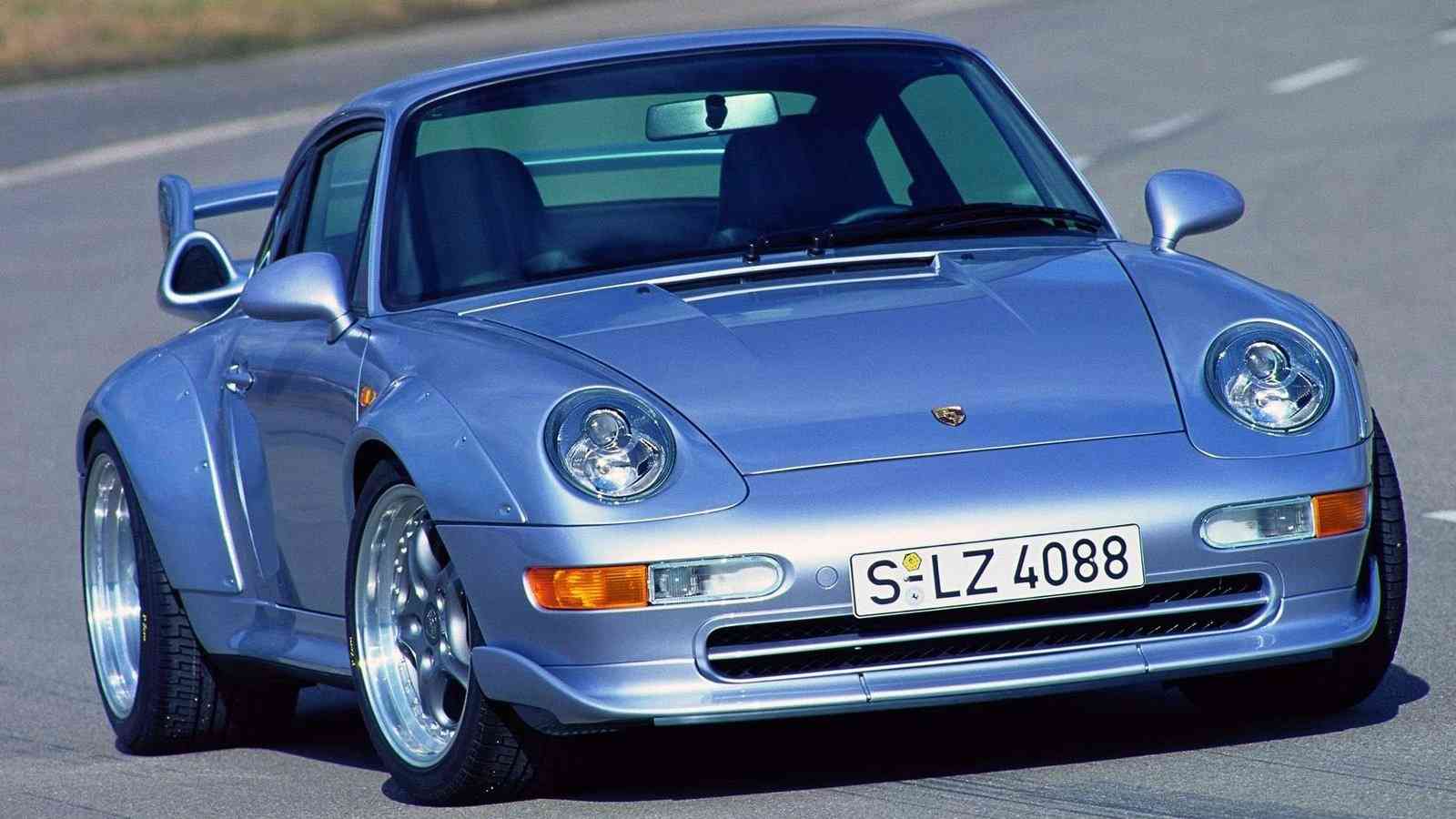 I dread to think what the nineties supercar scene would have been like had it not been for homologation requirements. The track-focused, road-going 911 GT2 was introduced in 1993, initially to meet the requirements for GT2 regulations.
The formula of ultra-light, high-power and track credentials seemed to strike a chord with Porsche’s customer base, as the German marque kept the twin-turbo track rocket on its order sheets all the way through to 2012.
424bhp came courtesy of the rear-mounted 3.6-litre power plant, fed air through neatly-positioned intakes at either end of the GT2’s colossal rear wing. Other contemporary road-going 911s of the day also had four-wheel-drive, though this was scrapped in the GT2 in favour of racier rear-wheel-drive.
I dread to think what the nineties supercar scene would have been like had it not been for homologation requirements. The track-focused, road-going 911 GT2 was introduced in 1993, initially to meet the requirements for GT2 regulations.
The formula of ultra-light, high-power and track credentials seemed to strike a chord with Porsche’s customer base, as the German marque kept the twin-turbo track rocket on its order sheets all the way through to 2012.
424bhp came courtesy of the rear-mounted 3.6-litre power plant, fed air through neatly-positioned intakes at either end of the GT2’s colossal rear wing. Other contemporary road-going 911s of the day also had four-wheel-drive, though this was scrapped in the GT2 in favour of racier rear-wheel-drive.
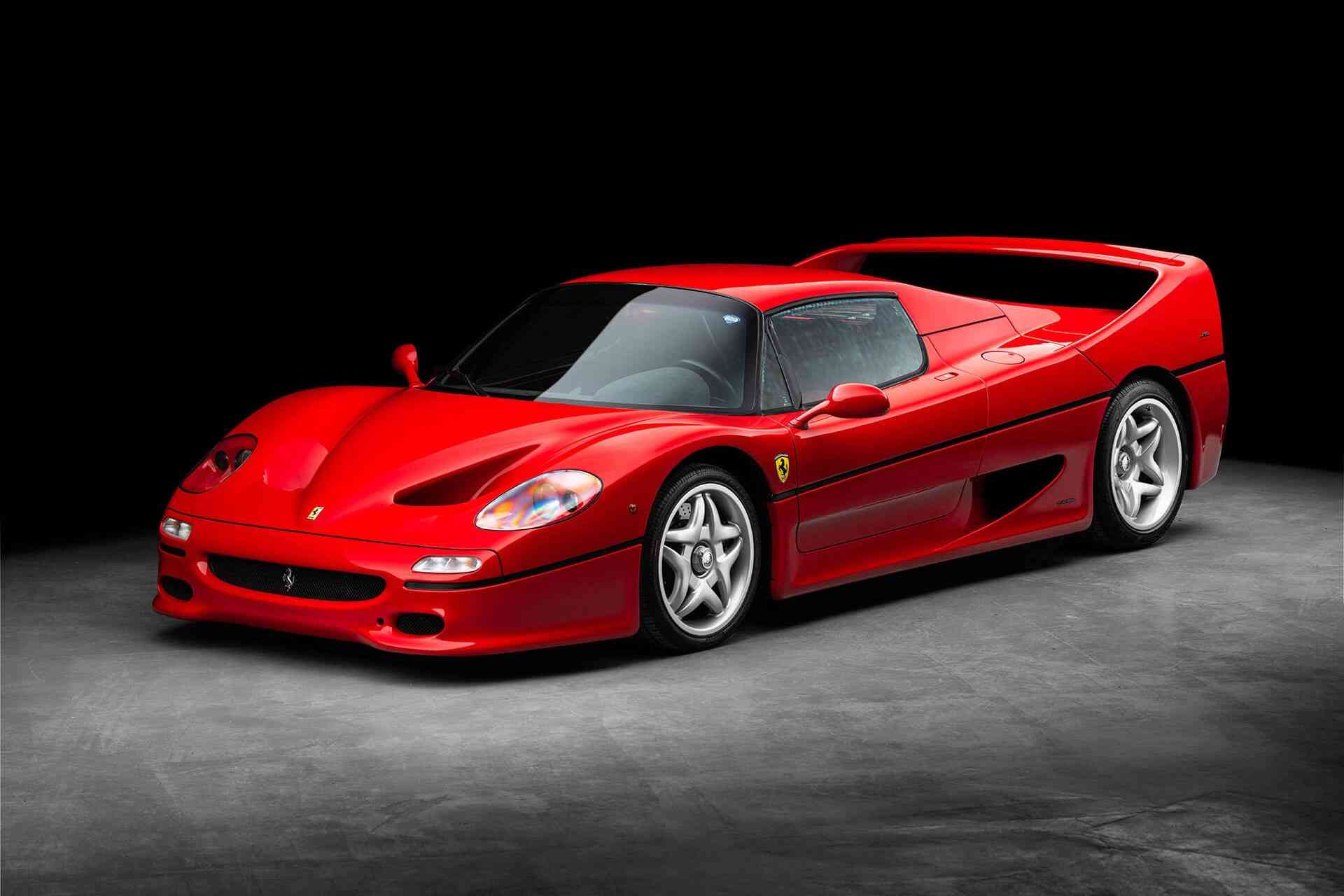 The Ferrari F50 began life with a tough act to follow. Its predecessor, the F40, had blown the motoring world away through the eighties and well into the nineties. Ferrari had to pull something very special out of their hats to follow Enzo’s final sign off for the company.
Their starting point was one of their old racing engines; the 3.5-litre V12 from the company’s 1990 F1 car. This was bored out to 4.7-litres before being mounted mid-ship in a carbon fibre monocoque chassis.
The resulting machine produced 513bhp, sent to the rear wheels in a car that weighed just 1320kg. The result? 0-60 in 3.8 seconds, a claimed top speed of 202mph and a deafening driving experience that shook owners to their cores. For those seeking an even more visceral experience, the roof could be removed.
The Ferrari F50 began life with a tough act to follow. Its predecessor, the F40, had blown the motoring world away through the eighties and well into the nineties. Ferrari had to pull something very special out of their hats to follow Enzo’s final sign off for the company.
Their starting point was one of their old racing engines; the 3.5-litre V12 from the company’s 1990 F1 car. This was bored out to 4.7-litres before being mounted mid-ship in a carbon fibre monocoque chassis.
The resulting machine produced 513bhp, sent to the rear wheels in a car that weighed just 1320kg. The result? 0-60 in 3.8 seconds, a claimed top speed of 202mph and a deafening driving experience that shook owners to their cores. For those seeking an even more visceral experience, the roof could be removed.
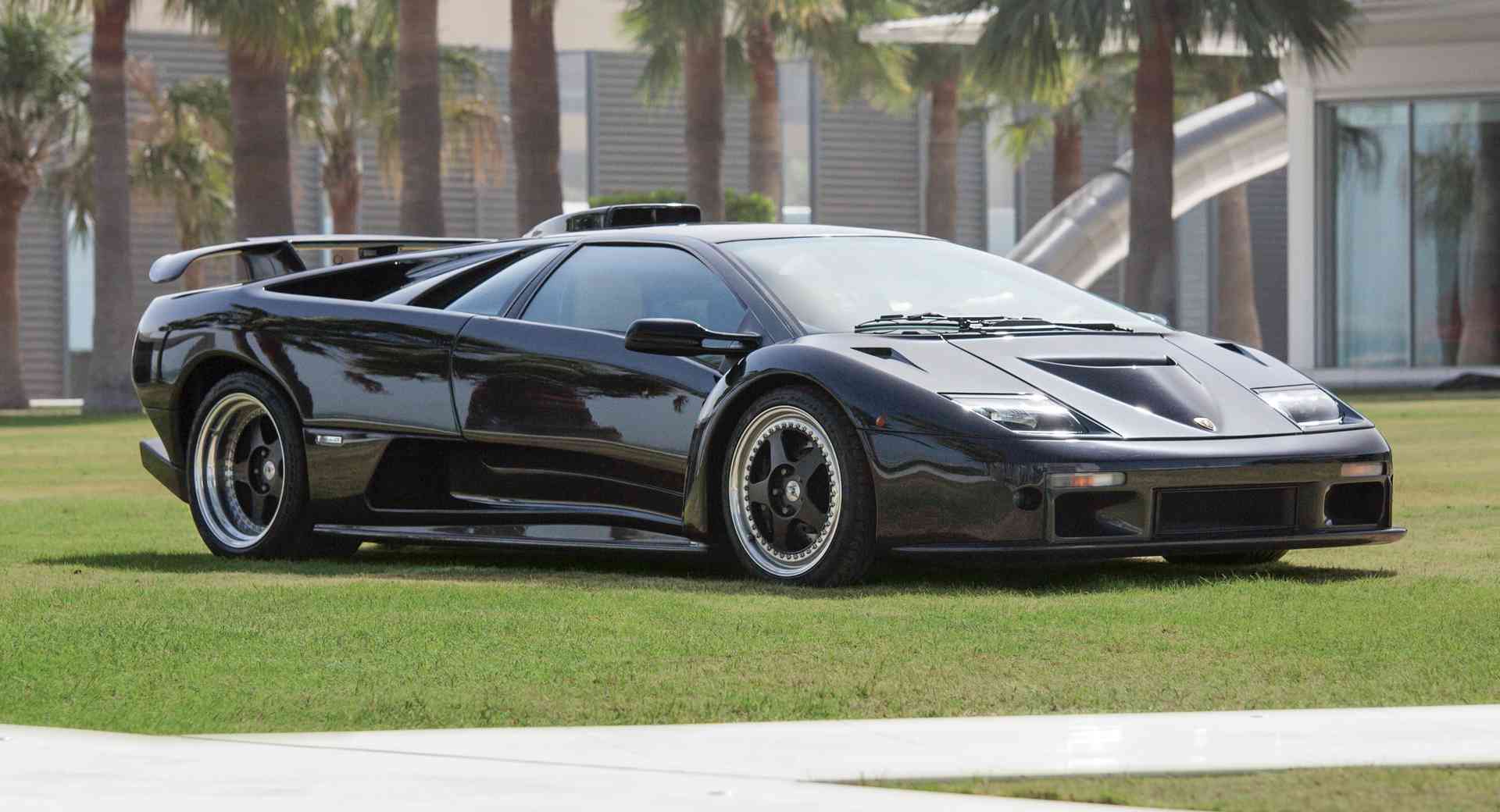 The Diablo literally translating as Devil. At launch it was fitted with a 5.7-litre V12 producing 485bhp, enough to launch its sleek and flash, yet still muscular body from 0-60 in 4.5 seconds and on to a top speed of 196bhp.
The Diablo, despite its nefarious name, was somewhat tamer than the car that came before it. It featured carbon fibre in the cockpit, but this was surrounded with luxurious leather trim.
That’s not to say it wasn’t without its evil side, most potent in later iterations the 510bhp SV and the rear-wheel-drive SE30 Jota – featuring that 5.7-litre V12 bumped up to 595bhp and various racing-focused changes that revealed the Diablo’s darker side.
The Diablo literally translating as Devil. At launch it was fitted with a 5.7-litre V12 producing 485bhp, enough to launch its sleek and flash, yet still muscular body from 0-60 in 4.5 seconds and on to a top speed of 196bhp.
The Diablo, despite its nefarious name, was somewhat tamer than the car that came before it. It featured carbon fibre in the cockpit, but this was surrounded with luxurious leather trim.
That’s not to say it wasn’t without its evil side, most potent in later iterations the 510bhp SV and the rear-wheel-drive SE30 Jota – featuring that 5.7-litre V12 bumped up to 595bhp and various racing-focused changes that revealed the Diablo’s darker side.
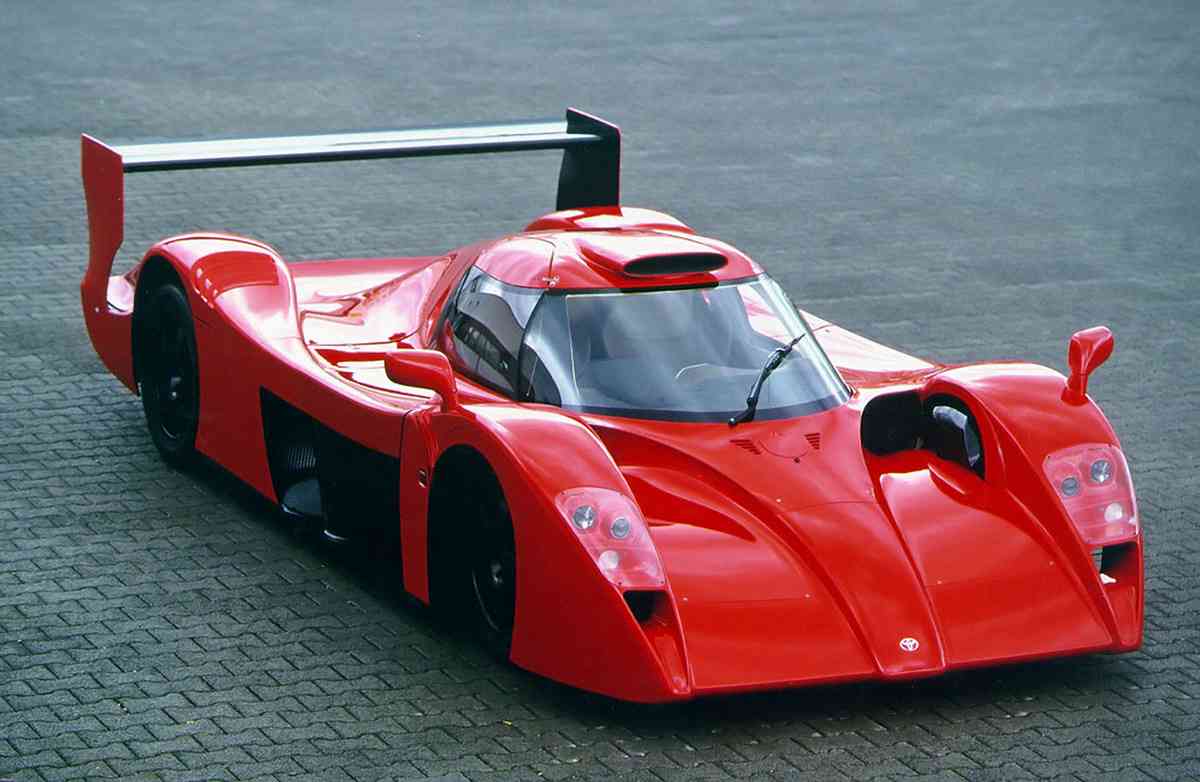 This one reminds us of a lego car. The Toyota TS020, better-known in Europe as the Toyota GT-One, is a pure-bred LeMans car, created specifically to contest the world’s most famous 24-hour race with no compromise in terms of design or engineering. The engine had its heritage in the twin-turbo V8 which powered Toyota’s Group C cars in the late 1980s.
In accordance with the FIA rules of the day, the GT-One had also to be developed
as a legal road car. In fact the differences between the race and road versions
were small: in road-going mode, the rear wing was set lower and the suspension
ride height was raised. A smaller fuel tank was fitted and the addition of
catalytic converters ensured the vehicle complied with emissions regulations.
Toyota says the engineers at Toyota Motorsport GmbH created just two
‘production’ TS020 GT-Ones – one is on display in its museum, the other in
Japan.
This one reminds us of a lego car. The Toyota TS020, better-known in Europe as the Toyota GT-One, is a pure-bred LeMans car, created specifically to contest the world’s most famous 24-hour race with no compromise in terms of design or engineering. The engine had its heritage in the twin-turbo V8 which powered Toyota’s Group C cars in the late 1980s.
In accordance with the FIA rules of the day, the GT-One had also to be developed
as a legal road car. In fact the differences between the race and road versions
were small: in road-going mode, the rear wing was set lower and the suspension
ride height was raised. A smaller fuel tank was fitted and the addition of
catalytic converters ensured the vehicle complied with emissions regulations.
Toyota says the engineers at Toyota Motorsport GmbH created just two
‘production’ TS020 GT-Ones – one is on display in its museum, the other in
Japan.
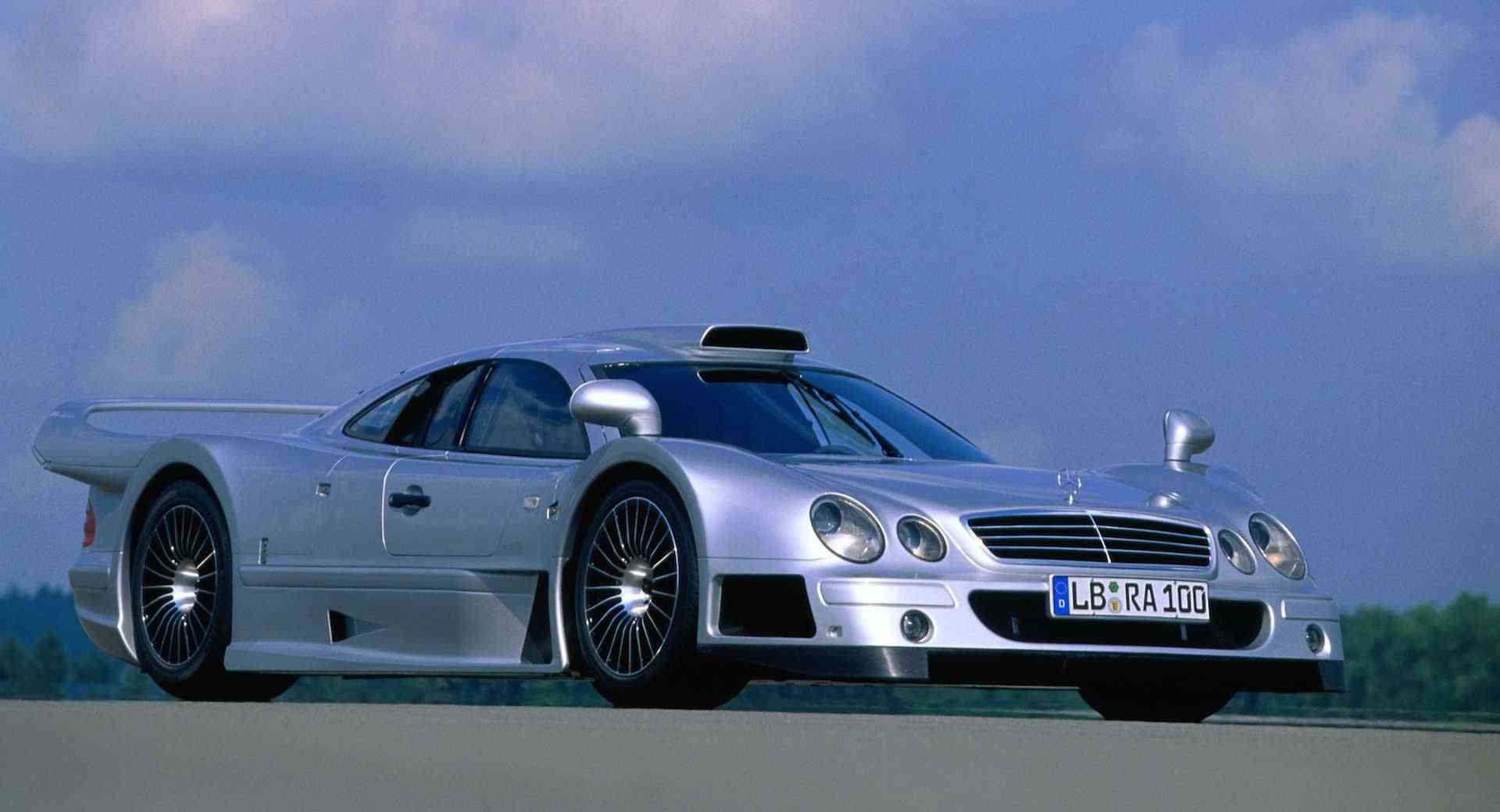 This one is very ‘Back to the Future’ or futuristic. The CLK GTR was born out of Mercedes-Benz desire to duke it out against Ferrari and Porsche in the FIA Championship. Essentially taking elements of a CLK racer and some road car trimmings and mashing them together, they produced the prototype in time for the 1997 season.
Although the 1999 GT1 class was cancelled, Mercedes-Benz had already promised 25 road-going homologation versions to customers and was obliged to produce these. Customer cars featured a 6.9-litre V12 which produced 604bhp, bestowing the GTR with ballistic performance – 0-60mph took 3.8 seconds, on the way to a top speed of 214mph.
The production CLK GTR was listed at the time as the most expensive
production car ever built in the Guinness Book of World Records, costing $1,547,620.
If you enjoyed this you’ll also like our top 10 supercars of the 80s!
This one is very ‘Back to the Future’ or futuristic. The CLK GTR was born out of Mercedes-Benz desire to duke it out against Ferrari and Porsche in the FIA Championship. Essentially taking elements of a CLK racer and some road car trimmings and mashing them together, they produced the prototype in time for the 1997 season.
Although the 1999 GT1 class was cancelled, Mercedes-Benz had already promised 25 road-going homologation versions to customers and was obliged to produce these. Customer cars featured a 6.9-litre V12 which produced 604bhp, bestowing the GTR with ballistic performance – 0-60mph took 3.8 seconds, on the way to a top speed of 214mph.
The production CLK GTR was listed at the time as the most expensive
production car ever built in the Guinness Book of World Records, costing $1,547,620.
If you enjoyed this you’ll also like our top 10 supercars of the 80s!
McLaren F1
 Gordon Murray’s automobile was the fastest production car ever made for a long time. It’s got an incredible top speed of 240 mph, which even puts our modern supercars to shame. Ergonomic features like the driver-centered, three-seat cockpit have rarely been seen since.
The technical challenge of getting a road car to such incredible speeds was one unlike any other manufacturer had undertaken. McLaren eventually settled on a 6.1-litre BMW V12. This was mounted in the middle of the car, and put 618bhp through the rear wheels.
The F1 was also the first production car to use a carbon fibre monocoque chassis, and gold famously lined the engine bay to aid with heat dispersal. This effort paid off, granting the F1 a staggering 0-60 time of 3.2 seconds and that all-important 240 mph top speed.
Gordon Murray’s automobile was the fastest production car ever made for a long time. It’s got an incredible top speed of 240 mph, which even puts our modern supercars to shame. Ergonomic features like the driver-centered, three-seat cockpit have rarely been seen since.
The technical challenge of getting a road car to such incredible speeds was one unlike any other manufacturer had undertaken. McLaren eventually settled on a 6.1-litre BMW V12. This was mounted in the middle of the car, and put 618bhp through the rear wheels.
The F1 was also the first production car to use a carbon fibre monocoque chassis, and gold famously lined the engine bay to aid with heat dispersal. This effort paid off, granting the F1 a staggering 0-60 time of 3.2 seconds and that all-important 240 mph top speed.
Bugatti EB110 Super Sport
 Initially revealed on the company’s founder, Ettore Bugatti’s 110th birthday in 1991, the EB110 came to be the last Italian-produced Bugatti before VAG took over.
These days the Bugatti name stands purely for all-out speed and refinement, and though the EB110 was never a record breaker at the top end of the speed stakes, topping out at 216mph, it was capable of reaching 62mph in just 3.2 seconds in 1992 Supersport trim – one of the fastest cars of its era over that dash.
That rapid acceleration was mostly thanks to the Bugatti’s 3.5-litre, quad-turbo V12, which transferred 604bhp to the road through all four wheels.
Initially revealed on the company’s founder, Ettore Bugatti’s 110th birthday in 1991, the EB110 came to be the last Italian-produced Bugatti before VAG took over.
These days the Bugatti name stands purely for all-out speed and refinement, and though the EB110 was never a record breaker at the top end of the speed stakes, topping out at 216mph, it was capable of reaching 62mph in just 3.2 seconds in 1992 Supersport trim – one of the fastest cars of its era over that dash.
That rapid acceleration was mostly thanks to the Bugatti’s 3.5-litre, quad-turbo V12, which transferred 604bhp to the road through all four wheels.
Jaguar XJ220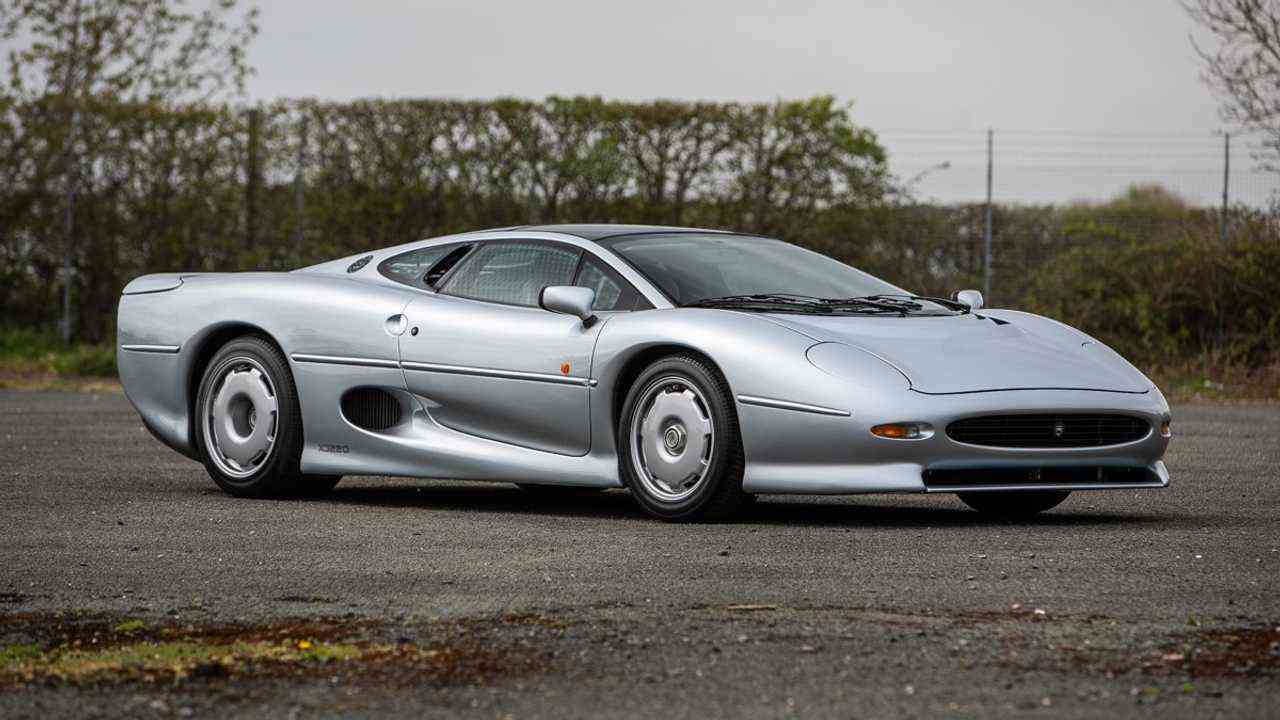
Jaguar’s first production supercar, the XJ220 was a bold step it held top speed record till McLaren F1 came along.
The XJ220 started life as a mid-engine, four-wheel-drive concept car developed by Jaguar employees in their spare time. That initial concept was planned around a V12 powerplant. By the time the first customer cars were delivered in 1992, a twin-turbo 3.5-litre V6 sat mid ship, delivering 542bhp.
With a top speed of 212mph, the XJ220 was the fastest production car from its launch through to 1993, when it was topped by another British-built speed machine. This peaked initial interest in the car, but between the 1990s financial recession and the car’s retail price of £470,000, few took up the offer of ownership and only 281 cars were produced throughout its run. It was handy on the track too; it went straight to the top of the Nurburgring time sheets in 1991, recording a lap of 7:46:36; Hardly surprising, considering it was built with help from Tom Walkinshaw racing.
Honda / Acura NSX
 The launch of a supercar that caused a shock across the whole automotive scene came in 1991. With the NSX project, Honda set out to build a true supercar that had none of the ergonomic issues or reliability problems that plagued automobiles at the time.
Sold under the Acura brand in the States, and the Honda brand across the rest of the world, the NSX featured a 3.0-litre V6 with Honda’s trademark VTEC technology supplying the power, mounted mid-ship with extra consideration to the positioning of the seats and fuel tank for optimal weight distribution.
The launch of a supercar that caused a shock across the whole automotive scene came in 1991. With the NSX project, Honda set out to build a true supercar that had none of the ergonomic issues or reliability problems that plagued automobiles at the time.
Sold under the Acura brand in the States, and the Honda brand across the rest of the world, the NSX featured a 3.0-litre V6 with Honda’s trademark VTEC technology supplying the power, mounted mid-ship with extra consideration to the positioning of the seats and fuel tank for optimal weight distribution.
Dauer 962 Le Mans
 As a result of some creative rulebook interpretation the Dauer 962 won the Le Mans race in 1994. From 1983 forward, the Porsche 956 and its 962 IMSA spec version dominated for a decade. Porsche manufactured nearly 150 956/962s and sold many of the cars to private teams. Dauer took a handful of these Porsche 962s and modified them for street use. It is one of the most extraordinary cars to be sold for the streets, but that’s what allowed Porsche to enter the 962 in the GT category at Le Mans in 1994.
Of the companies that have produced a 962 road car, the most successful has been Dauer. After displaying their first 962 at the 1993 Frankfurt Show, Dauer partnered with Porsche to manufacture a contender for the 1994 24 Hours of LeMans. At the 24 hour race, Dauer showed up with both a road version and race version of the Porsches 962, a design which had already won Le Mans six times. After winning the race, the FIA declared it would be creating rules to make sure the 962 wouldn’t be back in 1995. However, with a Le Mans win under their belt, and with support from Porsche, Dauer continued to build their road-going 962.
As a result of some creative rulebook interpretation the Dauer 962 won the Le Mans race in 1994. From 1983 forward, the Porsche 956 and its 962 IMSA spec version dominated for a decade. Porsche manufactured nearly 150 956/962s and sold many of the cars to private teams. Dauer took a handful of these Porsche 962s and modified them for street use. It is one of the most extraordinary cars to be sold for the streets, but that’s what allowed Porsche to enter the 962 in the GT category at Le Mans in 1994.
Of the companies that have produced a 962 road car, the most successful has been Dauer. After displaying their first 962 at the 1993 Frankfurt Show, Dauer partnered with Porsche to manufacture a contender for the 1994 24 Hours of LeMans. At the 24 hour race, Dauer showed up with both a road version and race version of the Porsches 962, a design which had already won Le Mans six times. After winning the race, the FIA declared it would be creating rules to make sure the 962 wouldn’t be back in 1995. However, with a Le Mans win under their belt, and with support from Porsche, Dauer continued to build their road-going 962.
Porsche 911 GT2
 I dread to think what the nineties supercar scene would have been like had it not been for homologation requirements. The track-focused, road-going 911 GT2 was introduced in 1993, initially to meet the requirements for GT2 regulations.
The formula of ultra-light, high-power and track credentials seemed to strike a chord with Porsche’s customer base, as the German marque kept the twin-turbo track rocket on its order sheets all the way through to 2012.
424bhp came courtesy of the rear-mounted 3.6-litre power plant, fed air through neatly-positioned intakes at either end of the GT2’s colossal rear wing. Other contemporary road-going 911s of the day also had four-wheel-drive, though this was scrapped in the GT2 in favour of racier rear-wheel-drive.
I dread to think what the nineties supercar scene would have been like had it not been for homologation requirements. The track-focused, road-going 911 GT2 was introduced in 1993, initially to meet the requirements for GT2 regulations.
The formula of ultra-light, high-power and track credentials seemed to strike a chord with Porsche’s customer base, as the German marque kept the twin-turbo track rocket on its order sheets all the way through to 2012.
424bhp came courtesy of the rear-mounted 3.6-litre power plant, fed air through neatly-positioned intakes at either end of the GT2’s colossal rear wing. Other contemporary road-going 911s of the day also had four-wheel-drive, though this was scrapped in the GT2 in favour of racier rear-wheel-drive.
Ferrari F50
 The Ferrari F50 began life with a tough act to follow. Its predecessor, the F40, had blown the motoring world away through the eighties and well into the nineties. Ferrari had to pull something very special out of their hats to follow Enzo’s final sign off for the company.
Their starting point was one of their old racing engines; the 3.5-litre V12 from the company’s 1990 F1 car. This was bored out to 4.7-litres before being mounted mid-ship in a carbon fibre monocoque chassis.
The resulting machine produced 513bhp, sent to the rear wheels in a car that weighed just 1320kg. The result? 0-60 in 3.8 seconds, a claimed top speed of 202mph and a deafening driving experience that shook owners to their cores. For those seeking an even more visceral experience, the roof could be removed.
The Ferrari F50 began life with a tough act to follow. Its predecessor, the F40, had blown the motoring world away through the eighties and well into the nineties. Ferrari had to pull something very special out of their hats to follow Enzo’s final sign off for the company.
Their starting point was one of their old racing engines; the 3.5-litre V12 from the company’s 1990 F1 car. This was bored out to 4.7-litres before being mounted mid-ship in a carbon fibre monocoque chassis.
The resulting machine produced 513bhp, sent to the rear wheels in a car that weighed just 1320kg. The result? 0-60 in 3.8 seconds, a claimed top speed of 202mph and a deafening driving experience that shook owners to their cores. For those seeking an even more visceral experience, the roof could be removed.
Lamborghini Diablo GT
 The Diablo literally translating as Devil. At launch it was fitted with a 5.7-litre V12 producing 485bhp, enough to launch its sleek and flash, yet still muscular body from 0-60 in 4.5 seconds and on to a top speed of 196bhp.
The Diablo, despite its nefarious name, was somewhat tamer than the car that came before it. It featured carbon fibre in the cockpit, but this was surrounded with luxurious leather trim.
That’s not to say it wasn’t without its evil side, most potent in later iterations the 510bhp SV and the rear-wheel-drive SE30 Jota – featuring that 5.7-litre V12 bumped up to 595bhp and various racing-focused changes that revealed the Diablo’s darker side.
The Diablo literally translating as Devil. At launch it was fitted with a 5.7-litre V12 producing 485bhp, enough to launch its sleek and flash, yet still muscular body from 0-60 in 4.5 seconds and on to a top speed of 196bhp.
The Diablo, despite its nefarious name, was somewhat tamer than the car that came before it. It featured carbon fibre in the cockpit, but this was surrounded with luxurious leather trim.
That’s not to say it wasn’t without its evil side, most potent in later iterations the 510bhp SV and the rear-wheel-drive SE30 Jota – featuring that 5.7-litre V12 bumped up to 595bhp and various racing-focused changes that revealed the Diablo’s darker side.
Toyota GT-One
 This one reminds us of a lego car. The Toyota TS020, better-known in Europe as the Toyota GT-One, is a pure-bred LeMans car, created specifically to contest the world’s most famous 24-hour race with no compromise in terms of design or engineering. The engine had its heritage in the twin-turbo V8 which powered Toyota’s Group C cars in the late 1980s.
In accordance with the FIA rules of the day, the GT-One had also to be developed
as a legal road car. In fact the differences between the race and road versions
were small: in road-going mode, the rear wing was set lower and the suspension
ride height was raised. A smaller fuel tank was fitted and the addition of
catalytic converters ensured the vehicle complied with emissions regulations.
Toyota says the engineers at Toyota Motorsport GmbH created just two
‘production’ TS020 GT-Ones – one is on display in its museum, the other in
Japan.
This one reminds us of a lego car. The Toyota TS020, better-known in Europe as the Toyota GT-One, is a pure-bred LeMans car, created specifically to contest the world’s most famous 24-hour race with no compromise in terms of design or engineering. The engine had its heritage in the twin-turbo V8 which powered Toyota’s Group C cars in the late 1980s.
In accordance with the FIA rules of the day, the GT-One had also to be developed
as a legal road car. In fact the differences between the race and road versions
were small: in road-going mode, the rear wing was set lower and the suspension
ride height was raised. A smaller fuel tank was fitted and the addition of
catalytic converters ensured the vehicle complied with emissions regulations.
Toyota says the engineers at Toyota Motorsport GmbH created just two
‘production’ TS020 GT-Ones – one is on display in its museum, the other in
Japan.
Mercedes-Benz CLK-GTR
 This one is very ‘Back to the Future’ or futuristic. The CLK GTR was born out of Mercedes-Benz desire to duke it out against Ferrari and Porsche in the FIA Championship. Essentially taking elements of a CLK racer and some road car trimmings and mashing them together, they produced the prototype in time for the 1997 season.
Although the 1999 GT1 class was cancelled, Mercedes-Benz had already promised 25 road-going homologation versions to customers and was obliged to produce these. Customer cars featured a 6.9-litre V12 which produced 604bhp, bestowing the GTR with ballistic performance – 0-60mph took 3.8 seconds, on the way to a top speed of 214mph.
The production CLK GTR was listed at the time as the most expensive
production car ever built in the Guinness Book of World Records, costing $1,547,620.
If you enjoyed this you’ll also like our top 10 supercars of the 80s!
This one is very ‘Back to the Future’ or futuristic. The CLK GTR was born out of Mercedes-Benz desire to duke it out against Ferrari and Porsche in the FIA Championship. Essentially taking elements of a CLK racer and some road car trimmings and mashing them together, they produced the prototype in time for the 1997 season.
Although the 1999 GT1 class was cancelled, Mercedes-Benz had already promised 25 road-going homologation versions to customers and was obliged to produce these. Customer cars featured a 6.9-litre V12 which produced 604bhp, bestowing the GTR with ballistic performance – 0-60mph took 3.8 seconds, on the way to a top speed of 214mph.
The production CLK GTR was listed at the time as the most expensive
production car ever built in the Guinness Book of World Records, costing $1,547,620.
If you enjoyed this you’ll also like our top 10 supercars of the 80s!
Read more on
Have you checked us out on Instagram.
Check us out here.Related Stories
Advertisement Advertisement
Advertisement Advertisement
Advertisement

